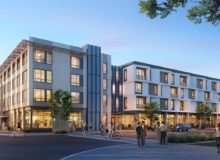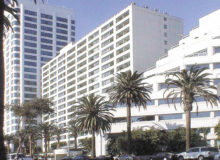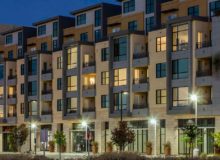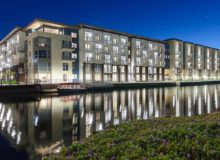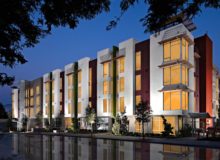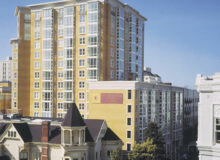Local funding helps bridge financing gap.
Publication: San Francisco Business Times
Author: Blanca Torres
Date: August 29, 2011
On the hilltop campus of Cañada College in San Mateo, community college officials recently opened up a 60-unit residential project aimed at housing faculty and staff.
 At $14 million or $233,000 per unit, the development is lean on costs, but with funding tighter than ever, the project is leaner than usual. The units include one to three bedrooms ranging from 740 to 1,270 square feet.
At $14 million or $233,000 per unit, the development is lean on costs, but with funding tighter than ever, the project is leaner than usual. The units include one to three bedrooms ranging from 740 to 1,270 square feet.
The downturn in the economy has made it more difficult for affordable housing developers to fund projects, but some developments on the Peninsula are going forward thanks to more support from local entities.
Education Housing Partners, the nonprofit arm of Thompson Dorfman Partners, developed Cañada Vista for the San Mateo Community College District, which provided 2.75 acres of a former parking lot for the project. Segue Construction Inc. was the contractor on the project.
Developer Bruce Dorfman said the project could have easily cost $50,000 to $100,000 more per unit had there been land and additional soft costs. On a typical residential project, 40 to 50 percent of the total outlay are soft costs for development, but were about 15 percent on the Cañada College project.
“We’re contributing our time and we’re getting contractors to work on very thin margins,” Dorfman said.
In Daly City, Habitat for Humanity Greater San Francisco recently broke ground on a $15 million, 36-unit project at 7555 Mission St. on a $3 million site the city’s redevelopment agency provided for the developer. About one-third of the costs are funded by the city. Other funding is coming from Proposition 1C, a state grant program, and typical subsidies and Habitat for Humanity fundraising efforts.
“Regardless of the economic housing crisis, cities are still looking to provide affordable housing but with less money to do so,” said Deven Richardson, director of real estate for Habitat for Humanity Greater San Francisco. Mid-Peninsula Housing Coalition recently completed the $34 million Peninsula Station, a 68-unit transit-oriented development near the Hillsdale Caltrain Station in San Mateo.
“The affordable housing sector is somewhat isolated from problems of market-rate developers, but now every deal is tougher,” said Matt Franklin, chief executive of the firm. “We just have incredible local and city partners.”
Mid-Peninsula now also has nearly 400 units in three projects under development, including a 109-unit project in South San Francisco that could start construction early next year, a 120-unit project in San Mateo on the site of a former police station and a 160-unit senior housing development in Half Moon Bay.
Franklin said cities and counties are typically the first entities to commit money to an affordable housing project, and then developers go out and seek numerous other sources such as tax credits, state and federal grants and conventional financing.
The tax credit market, in which corporations contribute money for projects and receive tax credits, has declined about 30 percent during the recession, so now the local entities are even more important sources of funding.
“They’ve been stepping up,” Franklin said. “Every deal has a gap in the financing. We’ve pushed our team to get things done and to set up more creative financing structures. We’re having to use a sharper pencil so that the deals still work.”
Besides the financing side, developers are also relying on cities to help find sites.
Various cities are looking at their properties along the El Camino Real, which is a part of a redevelopment and beautification project called the Grand Boulevard Initiative.
Norma Fragoso, redevelopment manager with the City of South San Francisco, said the areas along that corridor are zoned for higher density and can accommodate projects like Mid-Peninsula’s 109-unit project.
“We would love to see more projects like this in the city,” Fragoso said. “It has a beautiful design and is larger than the projects we’ve done in the past.”
Habitat for Humanity is also looking to higher density. Nationwide, Habitat for Humanity focuses on working with families to build single-family homes. On the Peninsula, the organization has steered recently toward rehabilitating blighted homes and transit-oriented, multifamily projects like 7555 Mission St. in Daly City.
“Density is definitely the trend we’re moving toward,” said Jennifer Doettling, a spokesperson for Habitat for Humanity Greater San Francisco. “(The Peninsula) is more urban than other areas and because land is so hard to come by.”
Blanca Torres

